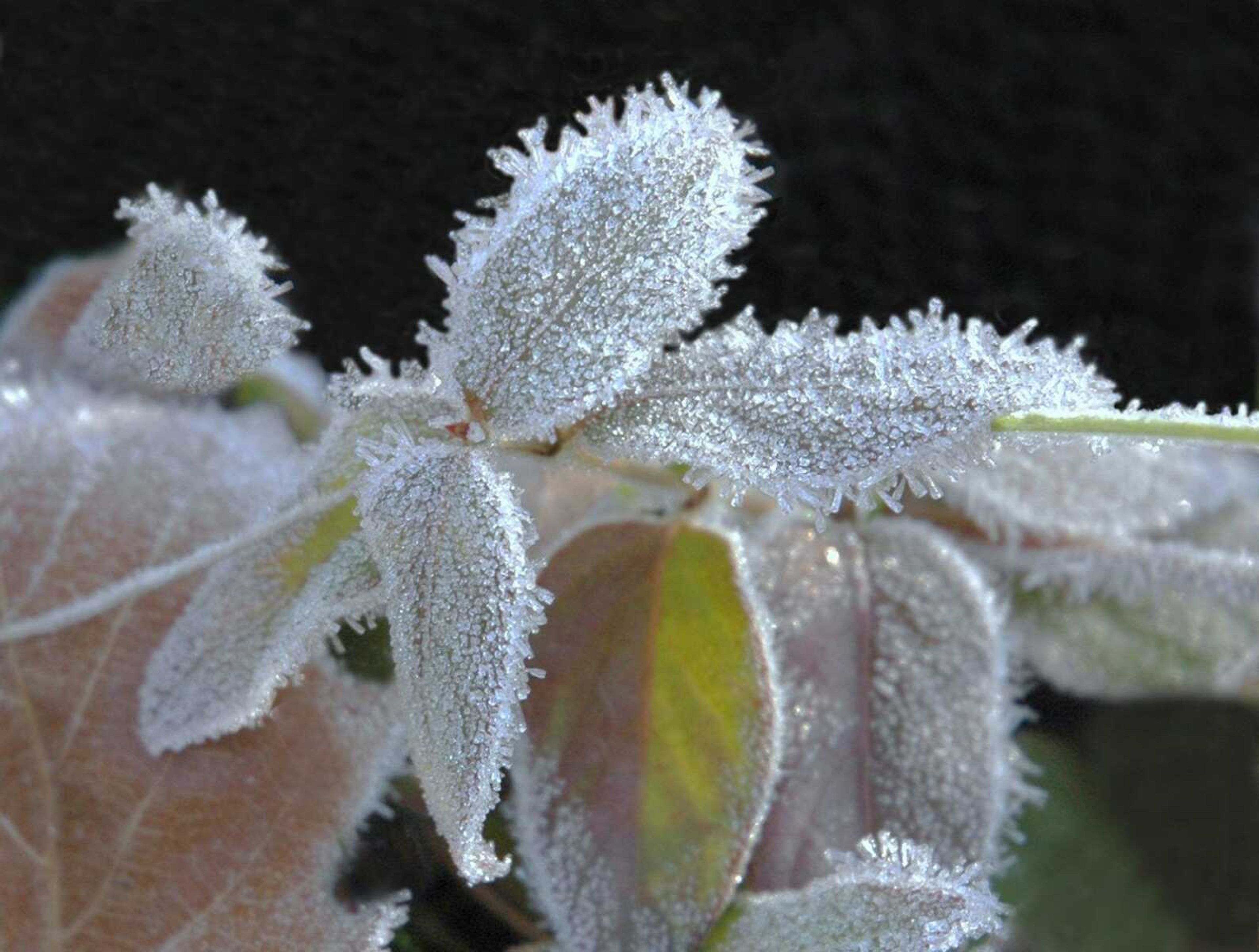Frost-covered nature
This picture shows early morning frost on honeysuckle leaves and a red oak leaf. There are several kinds of frost. The frost shown here is called radiation frost, commonly known as hoarfrost. Frost formed on these leaves during a recent cold calm night. The leaves chilled to a temperature below 32 degrees. Water vapor in the cool air deposited on the leaves and formed small ice crystals. Frost is more likely to form when a cold night is clear and there is little or no wind...
This picture shows early morning frost on honeysuckle leaves and a red oak leaf. There are several kinds of frost. The frost shown here is called radiation frost, commonly known as hoarfrost.
Frost formed on these leaves during a recent cold calm night. The leaves chilled to a temperature below 32 degrees. Water vapor in the cool air deposited on the leaves and formed small ice crystals. Frost is more likely to form when a cold night is clear and there is little or no wind.
Sometimes on cold, foggy nights frost will form on almost everything, making for an exciting sight the following morning. Usually frost does not last long after the sun rises, especially if the sunshine directly hits the frost.
Plants react to frost differently. Most garden plants, including tomatoes and peppers, do not tolerate frost. Turnips, radishes and mums are less affected.
Through the Woods is a weekly nature photo column by Aaron Horrell. Find this column at semissourian.com to order a reprint of the photo. Find more work by him at the O'Tenem Gallery.
Connect with the Southeast Missourian Newsroom:
For corrections to this story or other insights for the editor, click here. To submit a letter to the editor, click here. To learn about the Southeast Missourian’s AI Policy, click here.










